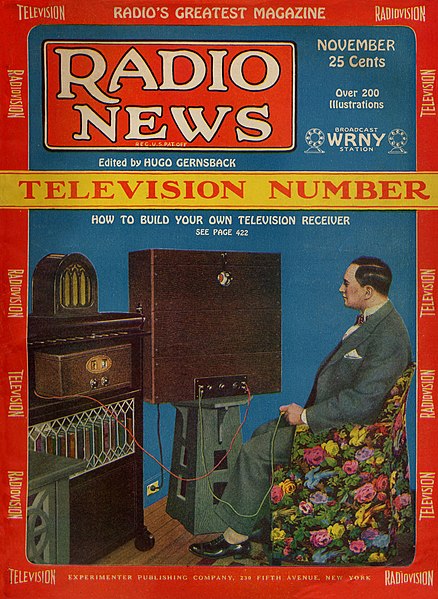Radio-Electronics was an American electronics magazine that was published under various titles from 1929 to 2003. Hugo Gernsback, sometimes called the father of science fiction, started it as Radio-Craft in July 1929. The title was changed to Radio-Electronics in October 1948 and again to Electronics Now in July 1992. In January 2000 it was merged with Gernsback's Popular Electronics to become Poptronics. Gernsback Publications ceased operations in December 2002 and the January 2003 issue was the last. Over the years, Radio-Electronics featured audio, radio, television and computer technology. The most notable articles were the TV Typewriter and the Mark-8 computer. These two issues are considered milestones in the home computer revolution.
The August 1949 issue of Radio-Electronics with Radio-Craft tag line.
Hope Lange models a radio hat on the cover of Radio-Electronics (June 1949)
Hugo Gernsback was an American editor and magazine publisher whose publications included the first science fiction magazine, Amazing Stories. His contributions to the genre as publisher were so significant that, along with the novelists Jules Verne and H. G. Wells, he is sometimes called "The Father of Science Fiction". In his honor, annual awards presented at the World Science Fiction Convention are named the "Hugos".
Gernsback portrait by Fabian, date unknown
Gernsback watching a television broadcast by his station WRNY on the cover of his Radio News (Nov 1928)
Gernsback's second novel, Baron Münchausen's Scientific Adventures, was serialized in Amazing in 1928, with the opening installment taking the February cover.
Gernsback's short story "The Cosmatomic Flyer", under the byline "Greno Gashbuck," was cover-featured in the debut issue of Gernsback's Science-Fiction Plus in 1953.






